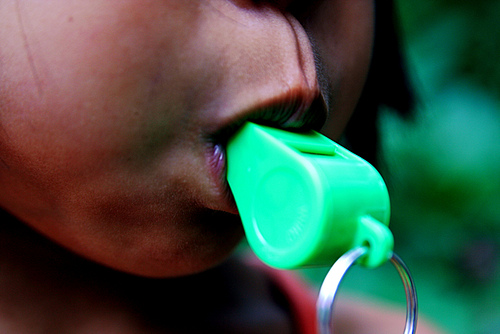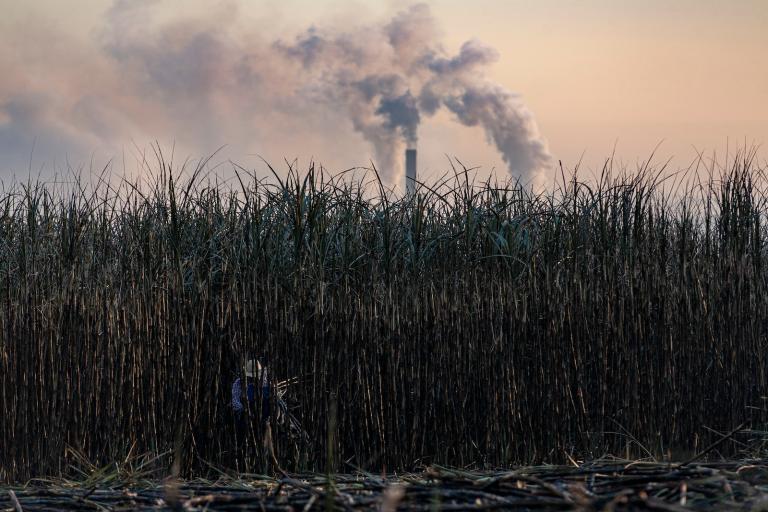 Resorts in Baja use around 70 percent of the available water.Photo: habo_73A recent New York Times article about organic tomatoes grown in the Los Cabos region of Baja California raised the question about whether “large-scale” export-oriented organic agriculture can truly be sustainable. According to reporter Elisabeth Rosenthal, the answer is no. She writes:
Resorts in Baja use around 70 percent of the available water.Photo: habo_73A recent New York Times article about organic tomatoes grown in the Los Cabos region of Baja California raised the question about whether “large-scale” export-oriented organic agriculture can truly be sustainable. According to reporter Elisabeth Rosenthal, the answer is no. She writes:
The explosive growth in the commercial cultivation of organic tomatoes here, for example, is putting stress on the water table. In some areas, wells have run dry this year, meaning that small subsistence farmers cannot grow crops. And the organic tomatoes end up in an energy-intensive global distribution chain that takes them as far as New York and Dubai, United Arab Emirates, producing significant emissions that contribute to global warming.
Secure · Tax deductible · Takes 45 SecondsSecure · Tax deductible · Takes 45 Seconds
Tom Philpott at Mother Jones piled on the critique, declaring in his post “Organic Tomatoes in January: Sucking Mexico Dry“:
What’s going on in Baja seems more about generating a premium-priced product while systematically degrading a landscape. Want organic tomatoes in the cold months? Buy them in a can.
There’s no question that eating seasonally is important. So are the larger questions of whether the USDA organic label provides enough emphasis on sustainability. But Rosenthal’s point about water depletion in Baja coming from organic agriculture may be flawed.
Larry Jacobs, who runs the Del Cabo organic farming cooperative, which works with over 400 farming families in the area, says Rosenthal “completely blew it.”
He observed that the water issues in Baja (as well as in the West as a whole) are tremendous. “From the tip of the Baja all the way to San Francisco, there are very few aquifers that aren’t maxed out or overdrafted,” he said.
The Los Cabos area, where many of Jacobs’ member farms are based, has seen an explosion in tourist development over the last few decades. Los Cabos now boasts 20 golf courses, which use as much water as a town of over 200,000 people. (While many of these courses claim to use recycled water, Jacobs has heard rumors that they bribe water officials to illegally connect them to the aquifer.)
And then there are the resorts that line the coast, as well as the region’s two cities, all of which use 70 percent of the total water allocation, according to this study. In other words, only a minority of the water, i.e. 30 percent, is allocated to agriculture.
Meanwhile, Del Cabo has around 3,700 certified organic acres under cultivation — the equivalent of a large conventional Midwestern corn operation. But Jacobs says that they only plant around 350 acres in any given season. So for “large-scale” agriculture, what’s happening in Los Cabos is actually comparatively small. That being said, the impact of a true farmer cooperative that spreads the benefits to small-scale growers has been significant. New schools, medical care, and big increases in incomes have been credited to the success of Del Cabo.
“The golf courses never run out of water. The hotels never run out of water,” Jacobs observed, while in the towns, “water gets turned off all the time.” And Del Cabo farmers? Jacobs says they often use less than their official water allocation.
Referencing the classic movie about the Los Angeles water wars of the 1930s, Jacobs pointed out that in Baja, “it’s Chinatown all over again. And [Rosenthal] missed it. That would have been a great story.”
Indeed, while Rosenthal acknowledges the controversy over tourist development, she never bothers with any actual figures. And when she identifies a study that shows how agriculture depleted the water table in northern Baja, she doesn’t specify the type of agriculture that was being practiced. From my reading, and given the period researchers examined (1970-1990), the area was dominated by conventional, not organic, farms.
According to Jacobs, agriculture makes up too small a percentage of the total water use in the Los Cabos area to be the source of the problem — though that’s not necessarily true in northern Baja, where there is more large-scale conventional growing. Additionally, organic farmers are far more likely to be practicing drip irrigation (as are all the organic farmers Rosenthal quoted). In fact, Jacobs was “appalled” at Rosenthal’s characterization of organic agriculture in the region.
“Ten or 15 years ago we converted everybody from open ditch irrigation to drip irrigation — way ahead of what everybody else was doing,” he said. “We may have been the first in Mexico to use drip irrigation. We pioneered it … and we got blasted for it [in the New York Times article].”
And on further issues of sustainability, Jacobs points out that even large-scale organic agriculture promotes greater ecological diversity than conventional, since organic farmers typically plant the borders of their fields with various species designed to attract beneficial insects. Organic practices also bring improvements to soil health and reduce the toxic load on the environment. “I wish every farmer was organic,” he said. “It’s a big step in the right direction towards sustainability.”
This is not all to say that creating a market in which produce has no season and asparagus and tomatoes are seen as year-round crops isn’t a huge problem. Nor is organic agriculture exempt from water-use issues. Additionally, Jacobs’ Del Cabo co-op benefits from cheap fossil fuels for the U.S. distribution of his products. But even acknowledging all that, Rosenthal’s article reads more as a contrarian hit piece than a legitimate look at the water-use issues in Baja California. If anything, it’s the golf courses, not the organic tomatoes, that are sucking Mexico dry.




